What do you associate cross-dressing with? Is there a man in a skirt? A drag artist? Is it Channing Tatum dressed as Beyonce? Cross-dressing is so prevalent in almost every culture around the world, but how much do we really know about it?
Dressing up as the opposite sex has been a very common trope in art, especially theater and film, used to hide a character, to provide comic relief or a form of self-expression. Cross-dressing has been seen as the first act in breaking gender norms in history.
In 1910, Dr. Magnus Hirschfield published The Transvestites, who stated that transvestitism should not be viewed or rather reduced to homosexuality or fetishism. As a sexologist, Dr. Hirschfield was one of the first advocates of transgender people, and while his explanation of transvestites as people who dressed as the opposite sex was acceptable, the term itself has been seen as derogatory. That's why the term cross-dressers came into being.
Furthermore, one of the main reasons why cross-dressing became a practice was due to the perpetual patriarchy. The pressure of patriarchal societies and the power men had over women led to women crossing over as men to live adventurous lives. Often, lower-class women would dress as men to achieve financial independence. In fact, at the time, woman-to-man cross-dressing was almost always due to power, social status, or sexual desire.
Gods and cross-dressing

Cross-dressing was often seen as an act of crossing sex that was usually practiced by the gods. So in a way it could have been seen as a religious or devotional practice. It also indicates a person's desire to transcend human norms and completely dedicate themselves to the divine by letting go of what they should be. Changing the way one dressed was the closest way a human being could transform, unlike the gods who had their god-like powers.
Innana, a Sumerian deity, is believed to have gender reassignment and can also transform into both sexes itself. The followers of Innana or their cults were known to include mixed gender elements in the processions.
Greek mythology
The presence of homosexuality was very prominent in Greek mythology, so there is nothing to stop us from believing that cross-dressing was not a common occurrence in Greek society. Gods and demigods are part of all the stories in Greek mythology, and some of the biggest names in these stories have been known to go across from time to time.
The greatest of the warriors, Achilles, was said to have been dressed as a woman at the court of Lycomedes to hide from Odysseus, who wanted him to fight in the Trojan War. It was said that the goddess Athena helped ordinary people dressed as men. Furthermore, just like the Sumerian deity Innana, the followers of Aphrodite dressed as the opposite sex. Men often wore women's clothes, while women dressed as men and wore false beards as well.
Hindu mythology

If you were to ask a person living in India about cross-dressing today, most people would be against it or would see the practice as something derogatory or humiliating. However, Hindu mythology has portrayed Indian gods as crossdressers in many situations.
The devotees of Lord Krishna, who was an incarnation of Vishnu, one of the three most important Indian gods, wanted to dress up as females. This sect of devotees became known as Sakhi Bekhi . It is said that Krishna dressed up as a Gopi (female companion to Lord Krishna) or a kinnari goddess (celestial musician, partly human, partly bird according to Buddhist mythology). This is where the term Cheeks comes from or Children derives from, which is a common term when referring to hijras in India.
In addition, one of the greatest Hindu texts, Mahabharata, includes the character of Arjuna cross-dressing as a woman. According to the story, the five brothers - Pandavas, had to live in exile, and Arjuna, the great archer, disguised himself as Bhrinnala and became a dance teacher for a princess of a nearby kingdom.
Wartime and cross-dressing

Cross-dressing seemed to be a very common phenomenon during or before wars. Taking the idea from one of the greatest warriors in Greek mythology, it was said that many men disguised themselves as women to prevent them from participating in wars. On the other hand, there are stories of women dressing up as men and ending up as soldiers in male-dominated armies.
Joan of Arc is probably the most prominent name in this category. She was known for leading several armies in France to victory disguised as a male soldier the entire time. The Countess of Hainaut, Holland, Jacqueline of Wittelsbach along with one of her servants disguised themselves as men to escape confinement.
The well-known cross-dressers in History
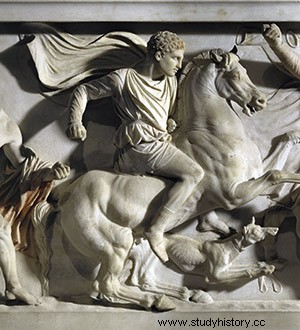
There are several stories of women disguised as monks or male offspring of monarchs disguised as women. The Korean princess Geonghye dressed her son, who was the male descendant of the throne, as a woman to trick the officials and relatives into believing that there was no male heir.
The practice of dressing as the opposite sex became quite useful, especially for women living in a society ruled by men. To go to medical school in 19 th century, Margaret King dressed as a man since the school did not accept female students. Another example would be Vita Sackville-West who dressed like a soldier to be out in public with his girlfriend Violet Keppel.
Indian history will always mention the efforts of the hardline Rani Lakshmibai who fought in the 1857 uprising against British rule in Jhansi. Her ability to "fight like a man" is talked about in every history book, but it was her husband Gangadhar Rao, the king of Jhansi, who really broke gender norms. Being king gave him the freedom to do whatever he wanted without being questioned. There are stories of Gangadhar dressing up as a woman and engaging in rituals such as practicing immobility during a month of menstruation.
A claim was also made by Epiphus, a Greek contemporary, that Alexander the Great liked to cross himself. He claimed that Alexander would often dress up as Artemis, the archer goddess. However, this could simply have been about Epiphus' anger against the king's father, who had destroyed his hometown of Olynthus in 348 BC.
Drag, fetish and pass

Most people today are aware of the art of going. It is a special form of art where a person dresses up in over-the-top outfits and makeup and puts on a persona that is very dramatic, to say the least. Drag queens are men who dress like women and drag kings, who are women who dress to embody a dramatic male persona. Drag is about theater, and the performers are usually skilled in various art forms, such as singing, dancing, stand-up, etc.
For a long time, the line between cross-dressing and transvestite fetish was blurred. People looked down on cross-dressing because it supposedly reduced the person to a sexual fetish and in some cases to an inferior sex. A transvestite fetish is not limited to gay or heterosexual men, but also includes women. The practice basically refers to one member of a pair of cross-dressing to awaken the other.
Passing is the most complicated of them all. This takes cross-dressing a step further, since the subject's main goal is to pass as the other sex; it is not just the clothes, but also includes behavior, voice changes and what it takes to present oneself more as the opposite sex. However, passing is not limited to that. A person can also include traits of both sexes.
Gender Benders and Hijra Community
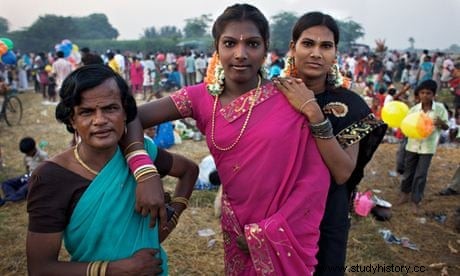
The strongest form of social activism is "gender bending", which can best be described as not conforming to gender stereotypes. However, gender bending is not limited to gender rules, it can also be a form of protest against misogyny, homophobia, transphobia or misandry. Whether it is protesting against the gender one was born into or the gender roles assigned by society, gender benders have made a big difference in how the world perceives cross-clothing.
Gender flexion can be expressed through cross-dressing or androgyny. Androgyny is the combination of masculine and feminine features in one. The best representation of the androgynous form is the Hijra community on the Indian subcontinent. The Hijra community has been widespread on the Indian subcontinent for centuries and is now considered the third sex by law.
bro hijras is a born man, but only a few undergo the process of achieving nirvana in the Hijra community, which means the removal of their male genitals. Society has been fighting for recognition for years. Their struggle for acceptance as neither man nor woman was finally given in April 2014.
Shakespeare Times

We have all read about the famous performances of Shakespeare's plays at the Globe Theater. At that time, women, children and slaves were considered unqualified to participate in activities such as going to the theater or acting. Therefore, all the female roles in Shakespeare's plays were played by young boys under the age of 13.
When it came to theater, the act of cross-dressing was acceptable, and a boy who behaved like a curly woman was considered normal. Furthermore, Shakespeare included cross-dressing in his plays to achieve a meta-comic effect, that is, a boy dressed as a woman would then dress as a man in the play. Even in tragedies such as Henry VI , he explored the idea of crossing with his famous comedies- The Merchant of Venice, Twelfth Night, and As you wish.
Movies &Television
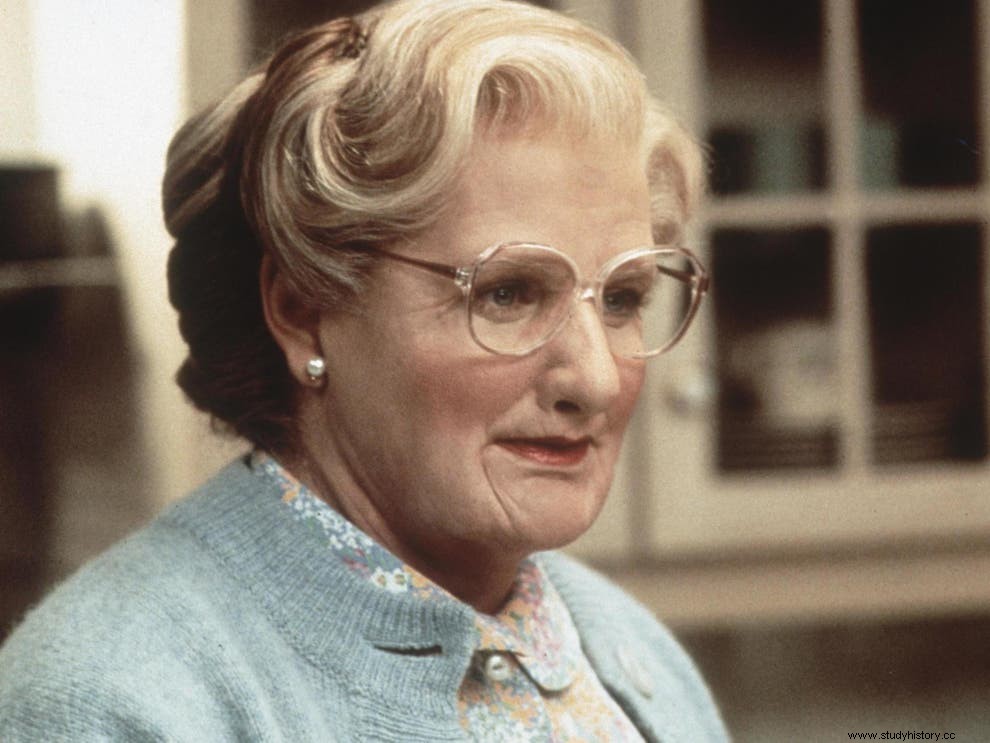
Over the years, dressing up as the opposite sex has become extremely common in movies and television. Cross-dressing was usually associated with comedies, so it only makes sense to mention the king of comedy on screen, Charlie Chaplin. Chaplin has dressed up as a woman a few times in his films and has been praised for his comic endeavors, especially when he was dressed as a woman.
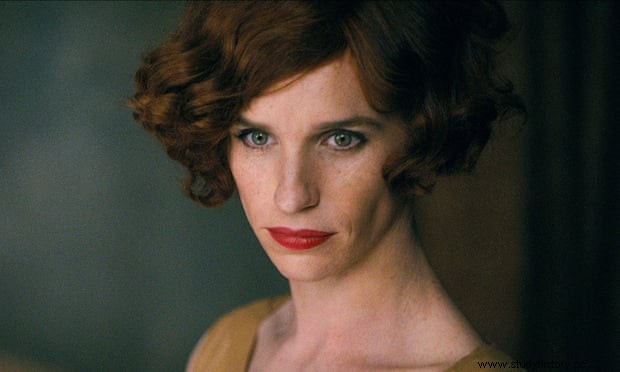
Some people like it hot, with the famous Marilyn Monroe in the lead role, has two of the male lead roles - Joe (Tony Curtis) and Jerry (Jack Lemmon) who pretend to be women throughout the film. While cross-dressing has been used as a comic trope in many films, such as Mrs. Doubtfire, Hairspray, Rocky Horror Picture Show, She's The Man, etc., the new wave of cinema and television has a more positive and acceptable perspective on cross-dressing, with empowering films such as. Mulan and The Danish Girl .
One of the most popular TV shows on your screens today is Rupaul's Drag Race. A reality TV show that has introduced the world to Drag art. Furthermore, shows such as Queer Eye has the hosts breaking gender norms every step of the way.
Motifs in Literature

The use of a cross-dressing character was a common literary element, especially when women dressed as men. A woman who dressed like a man in literature usually meant survival in a male-dominated society, whether it was for a simple job, education, or finding love. Women have often been denied the most basic facilities in society, so the best way to achieve another gram of freedom was to pretend she was not a woman at all.
A woman who dressed as a man in wartime or in a royal house was also a fairly common feature in the literature. A French fairy tale called Belle-Belle or le Chevalier Fortuné has the character Belle-Belle, the female protagonist, dressed as a knight who helps the king defeat an opposing emperor.
Is it as simple as wearing different clothes?
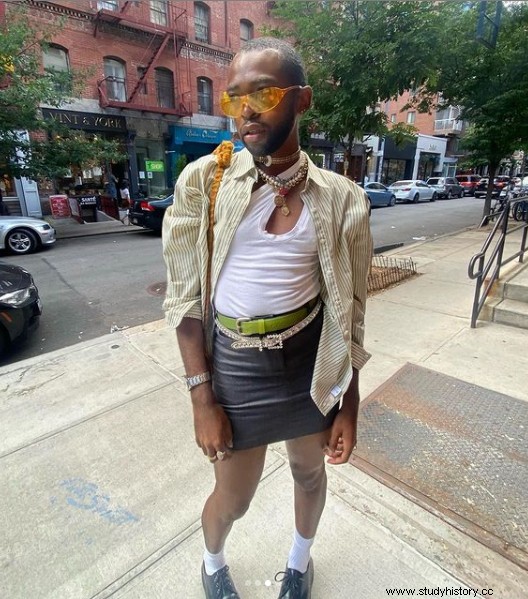
Over the years, our perception of gender norms has changed quite a bit, but not completely. There are still some countries that consider certain types of clothing suitable for women. Most schools around the world choose schoolgirls to wear skirts.
With the acceptance of the LGBT community, dressing is no longer seen as a humiliating or derogatory act. Today, a woman wearing a trouser suit or a tuxedo is considered a powerful movement. But it still seems that men face a lot of hatred for dressing in women's clothing. This is a theme that has been in the spotlight among third-wave feminists and the modern masculine movement.
But with social media platforms such as TikTok, men and women around the world have found a way to connect and appreciate each other for who they are. There are several TikTok celebrities who cross themselves not for comic purposes, but to strengthen themselves and others out there.
the conclusion
Cross-dressing has been around for centuries. Whether it was for theater, movies, literature, mythology or just social issues, it was a practice that helped many people. Today, the action of cross-dressing has become normal. Dressing in a way that makes one look and feel good has become a motto for many celebrities who promote the idea of cross-dressing.
You can now see some of the biggest names in the film or music industry wearing clothes of the opposite sex. Celebrities like Harry Styles, Prince, Jaden Smith and more. What a time to be alive! It may seem like a small thing, but dressing up in a way that makes you feel alive and secure can make a big difference in your life.
